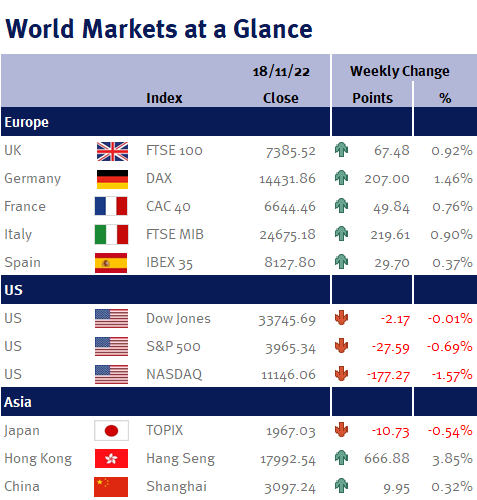Global equity markets had an enjoyable Thanksgiving week driven by hopes that the Fed will soon pivot to a slower pace of interest rate increases.
First up was the US Manufacturing PMI reading which fell to 47.6. This is the first time the reading has been below 50 since June 2020 – and the 50 level is important as it is the line separating expansion and contraction. Although the Fed is highly likely to continue to talk tough on inflation, we believe this data reading gives the Fed plenty of leeway to slow or pause their planned interest rate increases.
Furthermore, looking at the finer details of this data reading suggests that supply constraints continue to ease, while both input and output prices fell (which should also provide the Fed with some relief on the inflationary outlook).
Then the release on Wednesday (23 November 2022) of the minutes from the Fed’s last monetary policy meeting (which was held on 2 November 2022), indicated that policymakers are actually slightly more dovish than Jay Powell, the Fed Chair had indicated at the time. In fact, the minutes noted that there had been a “slowing in interest rate-sensitive sectors, particularly housing, in response to the tightening of financial conditions” and that households were shifting to cheaper options due to financial strains.


